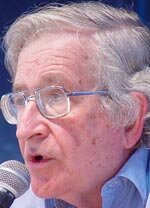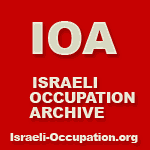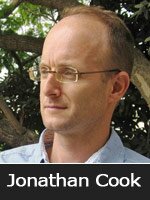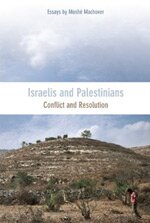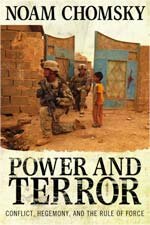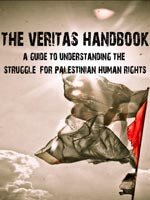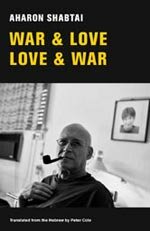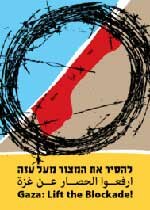By Lia Tarachansky, JNews – 8 March 2011
www.jnews.org.uk/commentary/in-the-land-of-king-david
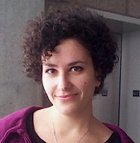
Lia Tarachansky
As the Israeli government endorses school trips to the Occupied Palestinian Territories, Israelis protest against the arrest of four hikers who killed a Palestinian during a similar tour.
Last week Israeli Education Minister Gideon Sa’ar announced a new programme – taking Israeli school children on tours to the occupied West Bank city of Hebron. It is scheduled to begin in September. This announcement follows closely on an investigation into the death of a 17-year-old Palestinian boy who was killed by Israeli hikers on a tour in the Occupied Palestinian Territories. In the past, such tours were permitted by the Israeli Civil Administration authorities but this announcement signals the first open government endorsement.
On 28 January 2011, the David and Ahikam Tours Company (link to Hebrew website) took a group of Jewish-Israeli hikers over the lands of the Palestinian village of Beit Ummar in the Hebron governorate. Youths from the village saw the group and threw stones. The hikers shot back, using live ammunition, wounding 23-year-old Bila Mohammad Abed Al-Qador and killing 17-year-old Yousef Fakhri Ikhlayl.
It never occurred to the Israeli media to ask why the youths had thrown stones. Here are some thoughts. It could have been that they mistook the group for settler scouts looking for a place to start a new outpost. Maybe they were frustrated at the military raids in their village two days before. Maybe they were angry that settlers had killed19-year-old Oday Maher Hamza Qadous near Nablus the day before. Or maybe they understood the group to be exactly what it was and wanted them off Palestinian land. In all likelihood they threw stones because throwing stones at any facet of the occupation is a boy’s rite of passage in the occupied territories. The Israeli press didn’t attempt to find out and only reported the hikers’ experience, in heroic and terrifying language:
“[Shimi] Prazot, 32, added, “our group included 12-year-olds, women over the age of 60, and no one had planned for a situation like that. We didn’t even know where to run to … I asked anyone in our group who had a weapon to cover the seniors’ and children’s escape. I cocked my personal weapon and hid behind a boulder”.
I wonder why no one in the group predicted such a possibility considering that the tour took place on occupied land in the heart of the West Bank. I also wonder how the media would have portrayed a group of Palestinian hikers touring the hills of Haifa being attacked by Israeli teenagers throwing stones.
The next day Israeli forces opened fireon Ikhlayl’s funeral, wounding 40.
Apart from Jerusalem, Hebron is the only Palestinian city in the West Bank inside which settlers have set up outposts. Shortly after the occupation began, religious Israelis went ‘on tour’ there. They never left. Their presence meant the displacement over time of tens of thousands of Palestinian residents from the Old City and decades of violent conflict, escalating in a 1994 massacre where settler Baruch Goldstein gunned down 29 Palestinians were in the Ibrahimi mosque; a further 125 were wounded. Known to the Palestinians as the Sanctuary of Abraham (or the Ibrahimi Mosque, al-Haram al-Ibrahimi) and to Jews as the Tomb of the Patriarchs (or Me’arat ha-Machpela), it is holy to both faiths as the place where Abraham is believed to be buried.
Ha’aretz columnist, Gideon Levy, writes about the Minister’s programme and the effect it will have on school children, saying, “They will return from Hebron excited at having touched the ancient stones and even more blinded from not having touched the people who lived alongside those stones. They will see nothing and learn nothing.” If the Minister insists on taking the school children to Hebron, says Levy, he should show them a full picture, of “the Jewish tradition and the Jewish injustice.”
Years after moving out of the settlements where I grew up, I took such a trip. It was organized by Breaking the Silence,an Israeli organization of veterans who had served in the occupation army, and now work with Palestinians to expose Israelis and internationals to a different view of Hebron. Had the students taken such a tour, they would have seen a ceiling of wire mesh above the streets of the Old City to stop the Israeli settlers who live above the marketplace throwing garbage and bricks on the Palestinians below. (Now they dump sewage and water.) The schoolchildren would also have seen the occupation at work with its administrative classifications, its checkpoints, soldiers, permits, walls and army jeeps. Of course it’s only a matter of time before they participate in it themselves when they reach conscription age.
Why take the students to Hebron? After all, it’s hard not to trip over religious and historically important sites throughout Israel and the Occupied Territories. The Minister’s explanation was that he thinks it’s “very important for them to know the historic roots of the people of Israel in the Land of Israel.”
David and Ahikam Tours are more forthright. Unlike the Minister, they don’t speak in code. For years they have organized Israeli nature and historic hiking tours throughout the occupied West Bank under the motto, “Where the Jewish traveler passes, the Jewish border shall pass”. And it is thanks to the tireless work of settlers that today’s schoolchildren can walk around their autonomous Jewish enclaves inside Hebron, carved out by displacing the former Palestinian residents.
That, in essence, is why Minister Sa’ar can talk about taking schoolchildren to Hebron, and not, say, to Nablus, which is equally significant from a historic point of view.
In their publicity, the organizers ask anyone traveling to the assembly points (at various settlements) to notify them if they have extra spaces for fellow hikers, to pack water and snacks, and to let them know if they intend to bring guns. Right now the tour company is advertising a hike through the hills where I grew up, near the settlement of Ariel (built on the lands of the Palestinian villages of Yasouf, Iskaka, Marda, Hares and Kifl Hares and the town of Salfit). At the bottom of the page the organizers kindly notify travelers that they “take no responsibility for their safety and security.” Like me growing up and the schoolchildren in Minister Sa’ar’s plan, the hikers will be shown a selective picture, far removed from the wall and the checkpoints. And they will believe, as I did, that they are on the frontlines of a fight to restore some glorious and distant ancient time.
The tour company itself is named after two soldiers who were killed while hiking through the occupied West Bank. “Ahikam and David followed the words of the scriptures,” say the organizers, “to ensure that each place where our foot shall pass will be our inheritance. They went to feel the spirit of the zealots and warriors of Bar Kokhba…where they fell as zealous warriors for the name of God and the name of the land of Israel which they loved so.”
This passage communicates the ideology behind these tours. It builds on the Zionist selectivity we were taught in our schools, claiming a Jewish right over the land and erasing that of the Palestinians who have lived there for centuries. It prepares us for army service and it underlines the legal designation of Palestinians as ‘foreigners’ making them outsiders, as the Romans once were. Referencing Bar Kokhba demonstrates that the organizers see themselves as revolutionaries, fighting as he did, in 132 AD, against the Roman emperor Hadrian in the Third Jewish Revolt.
The comparison is really quite ironic because Hadrian, in his frustration at the renewed Jewish rebellion against foreign rule, prevented Jews from traveling to Jerusalem, burned their religious texts on Temple Mount, and attempted to erase their memory and titles from maps. We may no longer be living in Roman times, but the colonial spirit has not been lost.
When four of the participants in the tour of Beit Ummar were arrested as part of an investigation into the death of Ikhlayl, protesters assembled outside the Jerusalem Magistrates Court holding signs that read “It’s our right to tour Eretz Israel”, “To the arrested – thanks to you we are alive today – the hikers”, and most ironically, “Where is the right to self-defense?”
Perhaps it is precisely because the balance of power here is so lopsided that this logic doesn’t even seem strange; that going into a militarily occupied area (recognized even by Israel as under Palestinian rule) and packing sandwiches with M16 rifles still makes teenagers with stones the aggressors. When Minister Sa’ar’s program begins and schoolchildren start traveling to occupied Hebron in armored cars surrounded by dozens if not hundreds of soldiers and police officers, the military show of force will also be justified as self-defense. And if any clashes do occur, the dehumanization of the Palestinians Gideon Levy refers to as at the heart of the occupation, will only strengthen the nationalistic narrative that brought these children there in the first place.
Lia Tarachansky () is an Israeli-Canadian journalist and the director of the upcoming documentary, Seven Deadly Myths. Most recently she worked as a Middle East correspondent with The Real News Network. Her writings and videos are available at www.liatarachansky.com




















